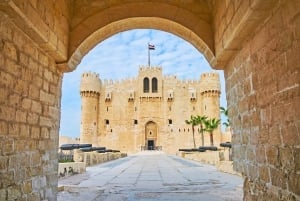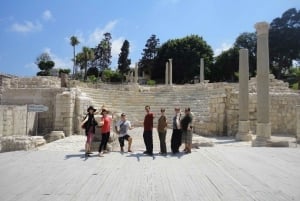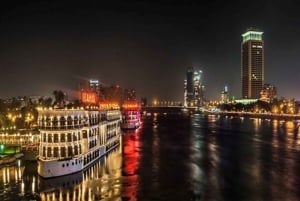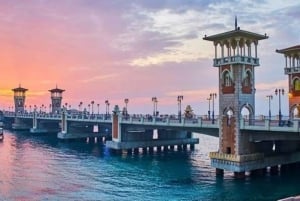Cairo General Overview
Situated at the heart of the Old World, Cairo is the capital city of Egypt, and the concentration of five thousand years of history, heritage and culture. It is a metropolis of startling diversity and vitality, where 15 million people lead Coptic, Islamic and cosmopolitan lives, and tradition clashes with innovation, creating an explosion of culture and activity. Tahrir Square, translated as Liberation Square, is the city's focal point, built in the 19th century by Ismail Pasha.
Cairo's medieval quarter, the centre of the Islamic community, is the most densely populated area of Egypt, which, in turn, is the most densely populated area in Africa, and one of the most populated cities in the world. Yet it has retained its character and essence, its winding alleys, old houses, food carts, bazaars, mosques, temples, goats, camels and donkeys, and its distinctive smells; perfume, spice and wood smoke. Indeed, to walk the streets of medieval Cairo is like stepping back in time.
The world's largest mosque, the Ibn Tulan Mosque, can be found here, along with the Mausoleum of Imam Ash Shafeii, Egypt's largest Islamic tomb, where one of Islam's great saints was buried. Perhaps the most striking edifice in Cairo's medieval quarter, however, is the Citadel, a commanding fortress which contains three major mosques and several museums. With more than 1,000 mosques to choose from in Cairo, the Citadel and nearby Sultan Hassan and Ali Rifaii mosques should feature prominently on any tourist's to-do list.
The Coptic population of Egypt's capital city is based within Old Cairo, a captivating area that boasts many fine examples of art and architecture. Of particular renown is the Egyptian Museum, widely regarded as one of the world's greatest collections of historic artefacts, specifically of Pharaonic and Byzantine art. Along with numerous mummies and sarcophagi, the museum houses the famous treasures of Tutankhamun, including his death mask which has become one of the most iconic symbols of ancient Egypt, and is rumoured to bring a curse upon anyone who touches it.
When Cairo was ruled by pharaohs, the River Nile's east bank was used for living while the west bank was for the dead. Today, the west bank is the most modern area of the city, while southern Cairo is dominated by casinos and luxury hotels, a stamp of modernism upon traditions that have existed for thousands of years. Then, suddenly, as if halted by an ancient Egyptian incantation, the sprawl of tarmac gives way to sand, and the edge of Cairo bows before the mighty Sphinx and Pyramids of Giza, to history that can never be extinguished or suppressed by the march of progress and time.











